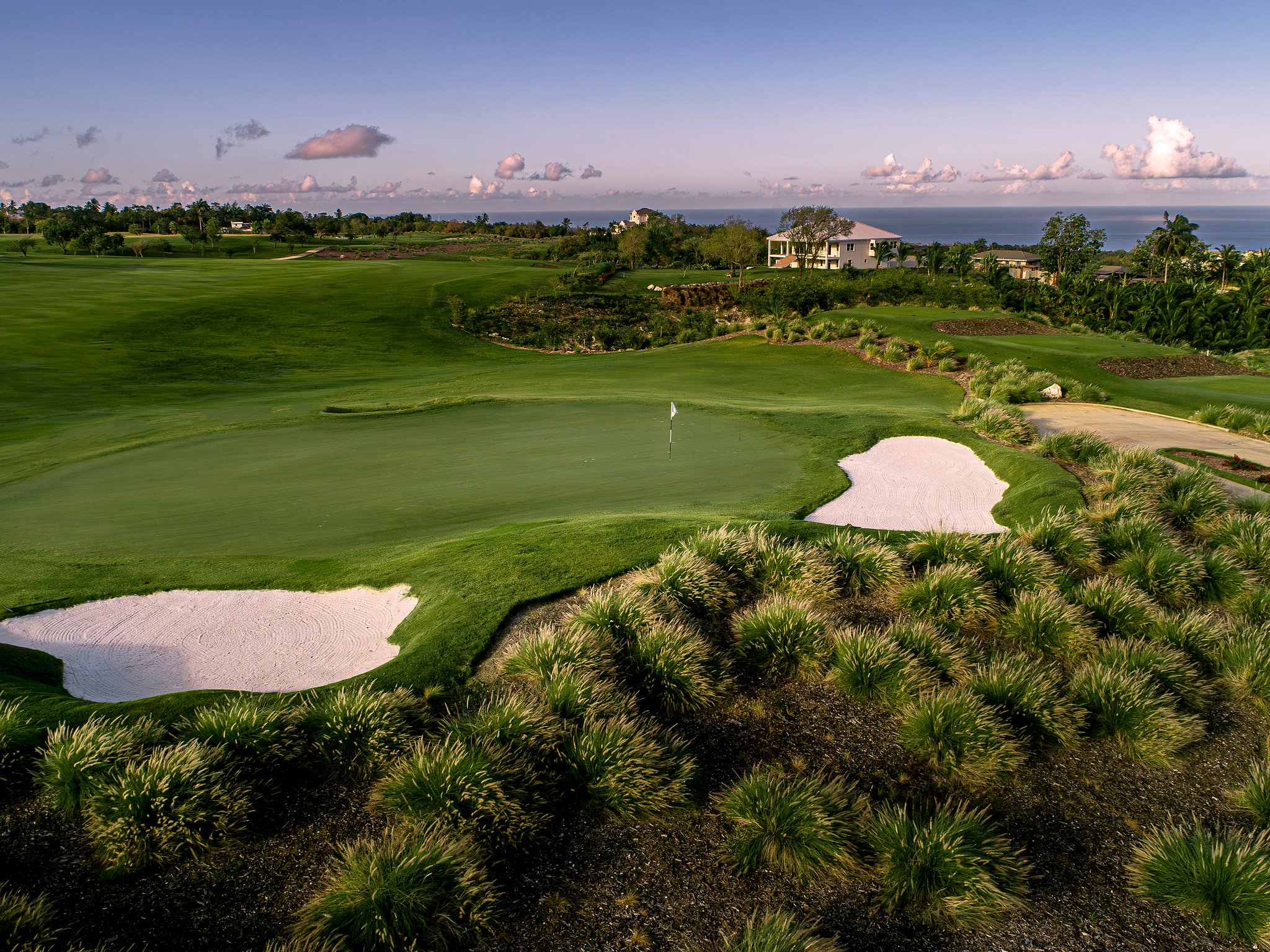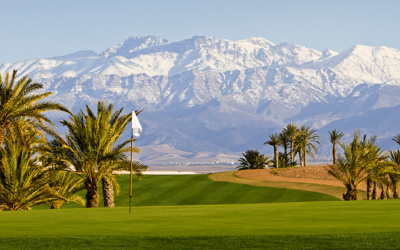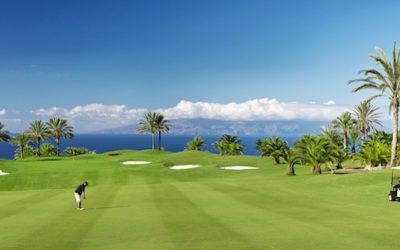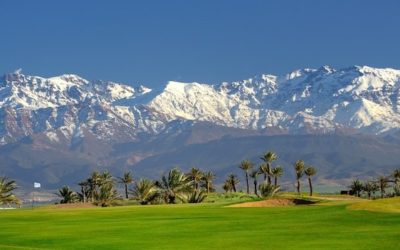You might think that 6000 miles is a long way to go for a round of golf. To be honest, nice though they were, the first three holes hadn’t entirely convinced me that plonking a size 14 carbon footprint on the earth’s surface and fidgeting for more than 11 hours on a jumbo jet in exchange for two days in paradise was sensible behaviour for a middle-aged man. But ten seconds on the fourth tee convinced me that any amount of damage and discomfort was acceptable to witness the vision of loveliness that lay before me.
Perhaps conscious that Ils aux Cerfs – the other course at the lovely Anahita Resort – is an immensely tough challenge that has earned a reputation as a fearsome, ball-gobbling monster, the developers must have given Ernie Els a clear brief to design soemthing that wouldn’t frighten the papaya out of golfers. Anahita is, after all, a resort full of holidaymakers who don’t especially want to spend the daylight hours thrashing around impenetrable jungle searching for lost Titleists. They come to unwind, relax and have fun. “So, Mr Els, kindly create a course that can provide those essential elements.”
Whether Ernie was chosen because Mauritius is a popular destination with South Africans and Anahita was eager to attract them to this glorious corner of the island, matters not one tropical fruit cocktail. The incontrovertible fact is that the Big Easy has produced a course of real quality with precisely the right balance of ying and yang.
Look Out for the Lagoons
From the mostly elevated tees, the target is pleasingly open, inviting and encouraging. That’s not to say that you can just let rip with your driver as a wild tee shot could well find one of the bunkers, lagoons and assorted hazards lurking around the corner. But, unless you are particularly nervous, you shouldn’t feel too anxious on the tee as the overwhelming probability is that any half decent shot will leave you in reasonable shape and with at least a fragrant sniff at a par.
And for those for whom golf only truly comes alive if the pleasure is spiked with a modest measure of pain, there is always the back tee option. From the ‘Ernie Els’ tees, the course stretches back to a big, and not at all that easy, 7372 yards. And if that still isn’t long enough, you can add another half-a-dozen by using an alternative tee at the pretty, par three 17th. Whilst on the subject of tee box options, between those at the very back and the reds at the very front, there are blue, white and gold. And these are not just alternative markers on the same teeing ground but are separate and distinct areas that enable golfers to select whichever they feel is appropriate for them.
Over 100 Years Old But He Doesn’t Look It
Although I don’t ordinarily much care for christening holes with what often sound like pretentious names, most of those here are rather appropriate. For example the opening hole, ‘Tortoise Corner.’ doesn’t hint at a slow start or warn of the likely pace of play but is a tribute to Anahita, a 120-year-old tortoise who hangs around the starter’s hut and first learnt to plod at about the same time J H Taylor was bashing a gutta-percha around Sandwich to clinch the first of his five Open Championships.
Anahita pops his head out from time to time and then lets it drift from side to side in mute disapproval of how technology has changed the game he loves. The second hole is ‘Old Stone Aqueduct’ for the self-evident reason that an old stone aqueduct crosses it. Some like the third, ‘The Virgin and The Child’ (not a pub, I’m informed), and the fifteenth, ‘Bassin Lubine,’ require further investigation and I’m hoping to be invited back to continue my research.
Witty and Welcoming Walls
Whether or not you care for the names, what is indisputable is that each hole is very distinct, which renders the inevitable après round post mortem altogether easier. Blessed with hectares of space between impressive mountains and the Indian Ocean, Ernie has ensured that the holes are well separated and self-contained. Not only does this help create the illusion that your group is alone on the course, but it also facilitates the springing of pleasant surprises, such as turning a corner to be confronted by a shimmering lagoon, towering coconut palms or, best of all, the Indian Ocean.
Banks of wispy grasses, clever contouring, carefully sited flowerbeds and strategically located trees help provide clear definition and shape to each of the holes so that what you see is precisely what you get. The walls found on two of the holes are witty and welcome additions that pose questions and might raise a few eyebrows.
Despite only having opened in June 2008, the course is lovely and lush which, given the ideal growing conditions that prevail in this glorious part of the world, is not all that surprising.
Why We Like It
Not all tropical islands match the hype. Mauritius is different; it’s better than the hype! There are a lot of great courses on the island but Anahita is undoubtedly one of the best simply because of its playability. However, we recognise there is a thin masochistic streak running through most golfers and there will be those who prefer the daunting carries and tight fairways of Bernhard Langer’s Ils aux Cerfs, which is the other quality course at The Anahita Resort.
 Golf writer Clive Agran, 65 and a journalist for more than 40 years, Clive Agran still wonders what he’ll do when he grows up. Nicknamed ‘Silky Swing’, he travels the globe looking for the world’s best golf courses.
Golf writer Clive Agran, 65 and a journalist for more than 40 years, Clive Agran still wonders what he’ll do when he grows up. Nicknamed ‘Silky Swing’, he travels the globe looking for the world’s best golf courses.






 0
0









